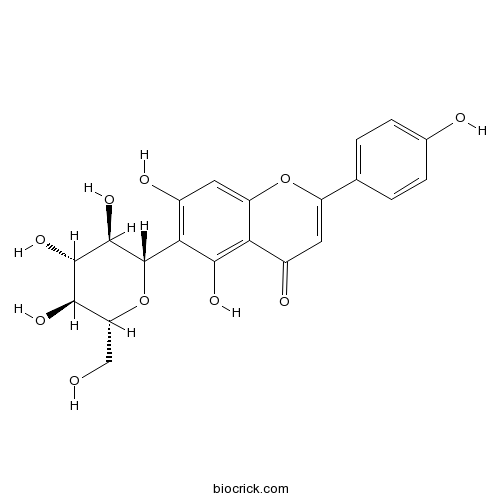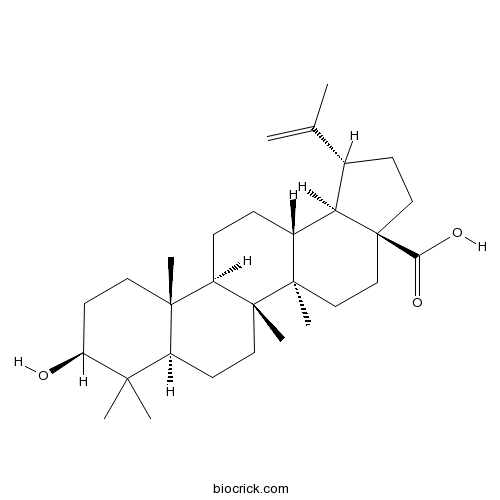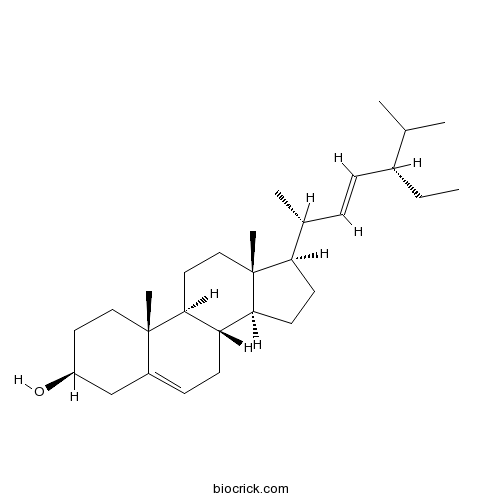Cajanus cajan
Cajanus cajan
1. The products in our compound library are selected from thousands of unique natural products; 2. It has the characteristics of diverse structure, diverse sources and wide coverage of activities; 3. Provide information on the activity of products from major journals, patents and research reports around the world, providing theoretical direction and research basis for further research and screening; 4. Free combination according to the type, source, target and disease of natural product; 5. The compound powder is placed in a covered tube and then discharged into a 10 x 10 cryostat; 6. Transport in ice pack or dry ice pack. Please store it at -20 °C as soon as possible after receiving the product, and use it as soon as possible after opening.
Natural products/compounds from Cajanus cajan
- Cat.No. Product Name CAS Number COA
-
BCN4984
Orientin28608-75-5
Instructions

-
BCN5441
Isovitexin38953-85-4
Instructions

-
BCN5524
Betulinic acid472-15-1
Instructions

-
BCN4376
Stigmasterol83-48-7
Instructions

Metabolomics analysis of Cajanus cajan L. seedlings unravelled amelioration of stress induced responses to salinity after halopriming of seeds.[Pubmed: 29995565]
Soil salinity has become a major concern for agriculture. Such constraints not only reinforce the urgent need to understand the underlying mechanisms by which plants cope during salt stress but also to develop cost-effective and farmer friendly halopriming technique to alleviate the adverse effects of salinity to some extent. Metabolomics approach was used to explore different responses to physiological metabolites and pathway variations that occur during salt stress responses in Cajanus cajan L. var. Rabi and to understand the role of halopriming in ameliorating stress at the level of metabolite. Seedlings raised from non-primed and haloprimed seeds, grown in hydroponic solution, were subjected to different concentrations of NaCl. After 21 days, metabolites were extracted, derivatized and analyzed by GC-MS. The data were analysed by different multivariate analyses. Chemometric study of the identified metabolites indicated that the leaves responded most to NaCl induced stress than the stem and root with production of beta-cyano-L-alanine and also increased level of different compatible solutes. O-Acetylsalicylic was also found to increase in all the parts upon facing stress but, such upregulated metabolite production was downregulated in the leaves when the seeds were haloprimed before germination, although many of the metabolites, including beta-cyanoalanine, showed a trend of increase with increase in salt concentrations. Important metabolites produced by C. cajan seedlings in response to salinity were unravelled. Pre-germination haloprimimg of seeds resulted in amelioration of NaCl induced stress, as the levels of stress induced metabolites were lowered.
Characterization, culture medium optimization and antioxidant activity of an endophytic vitexin-producing fungus Dichotomopilus funicola Y3 from pigeon pea [Cajanus cajan (L.) Millsp.].[Pubmed: 29791772]
The aim of this study was to characterize a fungal endophyte Y3 from pigeon pea (Cajanus cajan [L.] Millsp), as a novel producer of vitexin, and its culture medium optimization and antioxidant activity.
Molecular mapping and inheritance of restoration of fertility (Rf) in A4 hybrid system in pigeonpea (Cajanus cajan (L.) Millsp.).[Pubmed: 29705915]
None
Persistence of auxinic herbicides applied on pasture and toxicity for succeeding crops.[Pubmed: 29694496]
The aim of this work was to determine the persistence of auxinic herbicides applied on tropical pasture and toxicity for succeeding crops. The herbicides were applied in an area of dystrophic red‒yellow latosol with pasture infested of weeds. At 40, 80, and 280 days after application of herbicide, the soil samples were collected at depths of 0 to 20 cm. Soil with residues of 2,4-D, 2,4-D + picloram, triclopyr, and a soil without herbicide application were analyzed with six replicates. Seven crops were cultivated in these soils: cucumber (Cucumis sativus L.), velvet bean [Mucuna pruriens (L.) DC.], pigeon pea [Cajanus cajan (L.) Millsp.], alfalfa (Medicago sativa L.), lablab bean [Lablab purpureus (L.) Sweet], corn (Zea mays L.), and sorghum [Sorghum bicolor (L.) Moench]. The plants of cucumber, pigeon pea, and alfalfa were the most susceptible to the auxinic herbicide residues. However, the lablab bean was the only one among the dicot evaluated that showed tolerance to the 2,4-D + picloram residual when cultivated in soils at 280 days after application of herbicide. Corn and sorghum showed lower chlorophyll content in soils with 2,4-D + picloram residual up to 80 days after application of herbicide.
A novel mitochondrial orf147 causes cytoplasmic male sterility in pigeonpea by modulating aberrant anther dehiscence.[Pubmed: 29667000]
A novel open reading frame (ORF) identified and cloned from the A4 cytoplasm of Cajanus cajanifolius induced partial to complete male sterility when introduced into Arabidopsis and tobacco. Pigeonpea (Cajanus cajan L. Millsp.) is the only legume known to have commercial hybrid seed technology based on cytoplasmic male sterility (CMS). We identified a novel ORF (orf147) from the A4 cytoplasm of C. cajanifolius that was created via rearrangements in the CMS line and co-transcribes with the known and unknown sequences. The bi/poly-cistronic transcripts cause gain-of-function variants in the mitochondrial genome of CMS pigeonpea lines having distinct processing mechanisms and transcription start sites. In presence of orf147, significant repression of Escherichia coli growth indicated its toxicity to the host cells and induced partial to complete male sterility in transgenic progenies of Arabidopsis thaliana and Nicotiana tabacum where phenotype co-segregated with the transgene. The male sterile plants showed aberrant floral development and reduced lignin content in the anthers. Gene expression studies in male sterile pigeonpea, Arabidopsis and tobacco plants confirmed down-regulation of several anther biogenesis genes and key genes involved in monolignol biosynthesis, indicative of regulation of retrograde signaling. Besides providing evidence for the involvement of orf147 in pigeonpea CMS, this study provides valuable insights into its function. Cytotoxicity and aberrant programmed cell death induced by orf147 could be important for mechanism underlying male sterility that offers opportunities for possible translation for these findings for exploiting hybrid vigor in other recalcitrant crops as well.
Silver nanoparticle modulates gene expressions, glyoxalase system and oxidative stress markers in fluoride stressed Cajanus cajan L.[Pubmed: 29631046]
Application of engineered nanomaterials has increased these days due to their beneficial impacts on several sectors of the economy, including agriculture. Silver nanoparticles (AgNP) are commonly used to improve rate of seed germination, and growth and development of plants. The present study was aimed to monitor the role of engineered AgNP (non-dialysed) in the amelioration of fluoride (F)-induced oxidative injuries in Cajanus cajan L. Experimental results revealed that F-exposure inhibited growth and membrane stability index, while were enhanced with the augmentation of AgNP. The results also demonstrated that F treatment enhanced the accumulations of reactive oxygen species, malondialdehyde and oxidized glutathione, gene expression of NADPH oxidase, and activity of lipoxygenase, but were decreased by the addition of AgNP. The results indicated that exogenous application of AgNP provided tolerance against F-toxicity via enhancing the levels of proline, total and reduced glutathione, glyoxalase I and II activities, and expression of pyrroline-5-carboxylate synthetase gene. Conducted study uniquely suggested potential role of AgNP in the remediation of F-toxicity, at least in the Cajanus cajan L. radicles. Further research would be intended to unravel the molecular mechanism(s) involved precisely in the AgNP mediated alleviation of F-toxicity.
Identification, characterization and expression analysis of pigeonpea miRNAs in response to Fusarium wilt.[Pubmed: 29428797]
Upon confrontation with unfavourable conditions, plants invoke a very complex set of biochemical and physiological reactions and alter gene expression patterns to combat the situations. MicroRNAs (miRNAs), a class of small non-coding RNA, contribute extensively in regulation of gene expression through translation inhibition or degradation of their target mRNAs during such conditions. Therefore, identification of miRNAs and their targets holds importance in understanding the regulatory networks triggered during stress. Structure and sequence similarity based in silico prediction of miRNAs in Cajanus cajan L. (Pigeonpea) draft genome sequence has been carried out earlier. These annotations also appear in related GenBank genome sequence entries. However, there are no reports available on context dependent miRNA expression and their targets in pigeonpea. Therefore, in the present study we addressed these questions computationally, using pigeonpea EST sequence information. We identified five novel pigeonpea miRNA precursors, their mature forms and targets. Interestingly, only one of these miRNAs (miR169i-3p) was identified earlier in draft genome sequence. We then validated expression of these miRNAs, experimentally. It was also observed that these miRNAs show differential expression patterns in response to Fusarium inoculation indicating their biotic stress responsive nature. Overall these results will help towards better understanding the regulatory network of defense during pigeonpea -pathogen interactions and role of miRNAs in the process.


